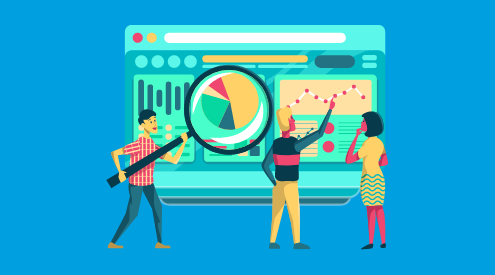Introduction
In today’s digital landscape, the success of marketing campaigns relies heavily on leveraging the power of marketing analytics. By harnessing the insights provided by data analysis, businesses can optimize their campaigns, target the right audience, and achieve remarkable results. In this article, we delve into the realm of marketing analytics, exploring its importance and the strategies you can implement to maximize your campaigns’ potential.
Understanding Marketing Analytics
Marketing analytics refers to the practice of collecting, measuring, and analyzing data to gain valuable insights into marketing efforts and customer behavior. It encompasses various techniques and tools that enable businesses to make data-driven decisions and refine their marketing strategies for better performance. Through marketing analytics, companies can gather valuable information about their target audience, assess campaign effectiveness, and identify areas for improvement.
The Importance of Marketing Analytics
Marketing analytics plays a pivotal role in the success of modern businesses. Here’s why it holds such significance:
1. Data-Driven Decision Making
In a world saturated with data, making informed decisions is crucial. Marketing analytics provides businesses with actionable insights derived from data analysis, allowing them to make evidence-based decisions. By understanding consumer behavior, preferences, and trends, companies can tailor their marketing campaigns to resonate with their target audience and drive desired outcomes.
2. Enhanced Campaign Optimization
Effective campaign optimization can be the difference between mediocre results and exceptional success. Marketing analytics empowers businesses to track and measure key performance indicators (KPIs) such as conversion rates, click-through rates (CTR), and customer acquisition costs (CAC). Armed with these metrics, marketers can identify underperforming areas and make data-driven adjustments to maximize campaign effectiveness.
3. Targeted Audience Segmentation
A one-size-fits-all approach no longer suffices in the realm of marketing. Through marketing analytics, businesses can segment their target audience based on demographics, behavior, interests, and other relevant parameters. This segmentation allows for personalized marketing campaigns, enabling companies to deliver highly targeted messages to the right individuals at the right time.
4. Measuring Return on Investment (ROI)
Marketing efforts require investments, and measuring the return on these investments is essential. Marketing analytics enables businesses to track the performance of their campaigns and calculate the ROI accurately. By understanding which marketing channels and tactics yield the best results, companies can allocate their resources more effectively, optimizing their marketing spend and maximizing profitability.
Strategies for Maximizing Campaigns Using Marketing Analytics
Now that we understand the significance of marketing analytics, let’s explore some strategies that can help you maximize your campaigns:
1. Set Clear Objectives and Key Performance Indicators (KPIs)
Before diving into any marketing campaign, it’s crucial to define clear objectives and establish relevant KPIs. By setting measurable goals, such as increasing website traffic or improving conversion rates, you can align your marketing efforts with your overarching business objectives. Tracking KPIs ensures that you stay focused on what matters most and provides a benchmark for evaluating campaign success.
2. Implement Advanced Tracking and Analytics Tools
To unleash the full potential of marketing analytics, it’s essential to leverage advanced tracking and analytics tools. Popular platforms like Google Analytics, Adobe Analytics, and HubSpot offer comprehensive features for measuring and analyzing marketing data. These tools enable you to monitor website traffic, visitor behavior, and campaign performance, providing valuable insights that drive optimization.
3. Utilize A/B Testing
A/B testing, also known as split testing, allows you to compare two or more variations of a marketing element to determine which performs better. By testing different headlines, images, call-to-action buttons, or landing page layouts, you can gather data on what resonates most with your audience. A/B testing helps optimize your campaigns by identifying the most effective elements, ultimately driving higher conversion rates.
4. Leverage Customer Journey Mapping
Understanding the customer journey is essential for creating personalized and targeted marketing campaigns. Customer journey mapping involves visualizing and analyzing the steps a customer takes throughout their interaction with your brand. By identifying touchpoints, pain points, and moments of delight, you can optimize your campaigns to deliver a seamless and engaging experience at each stage of the customer journey.
5. Embrace Predictive Analytics
Predictive analytics leverages historical data and statistical algorithms to forecast future trends and outcomes. By adopting predictive analytics models, businesses can anticipate customer behavior, identify potential churn, and optimize their marketing strategies accordingly. Predictive analytics enables you to stay one step ahead, making data-driven decisions that maximize the effectiveness of your campaigns.
Conclusion
In today’s fiercely competitive digital landscape, the importance of marketing analytics cannot be overstated. By harnessing the power of data analysis, businesses can optimize their marketing campaigns, drive targeted engagement, and achieve remarkable results. Through clear objectives, advanced tracking tools, A/B testing, customer journey mapping, and predictive analytics, you can unlock the true potential of your marketing efforts. Embrace marketing analytics, and propel your campaigns to new heights in the dynamic world of digital marketing.


Comments are closed.